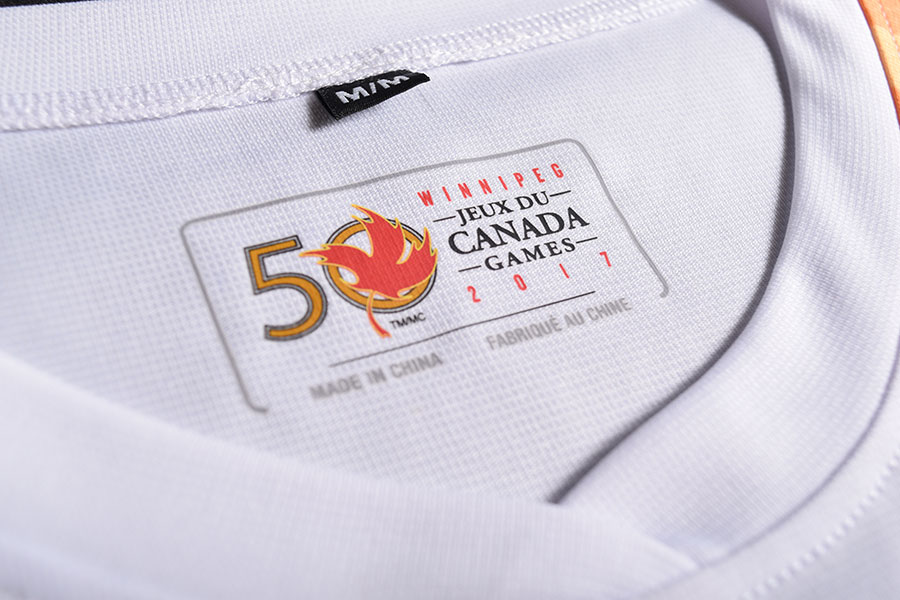
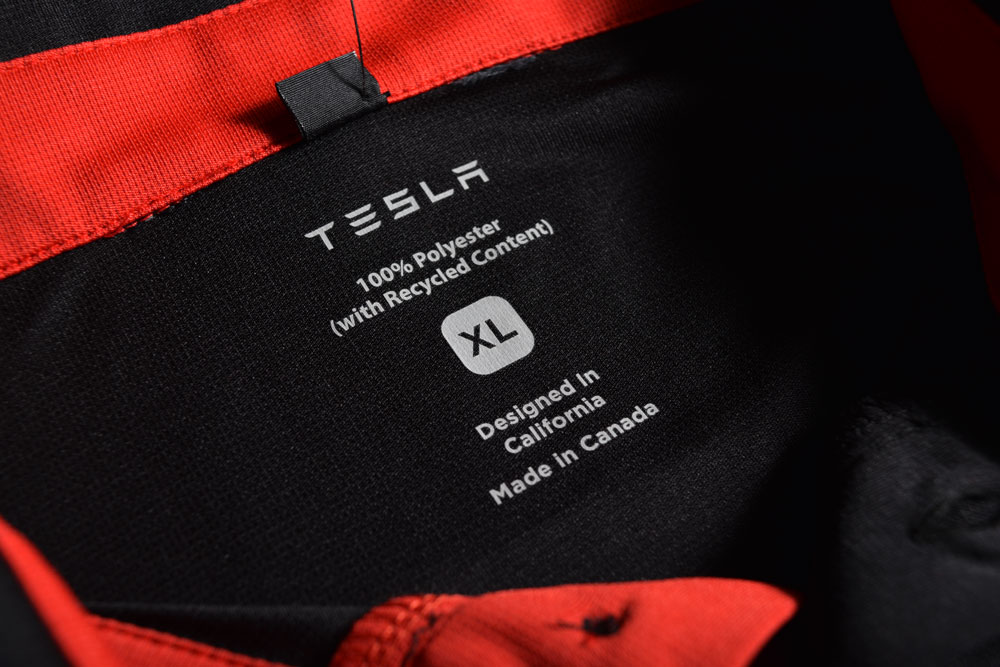
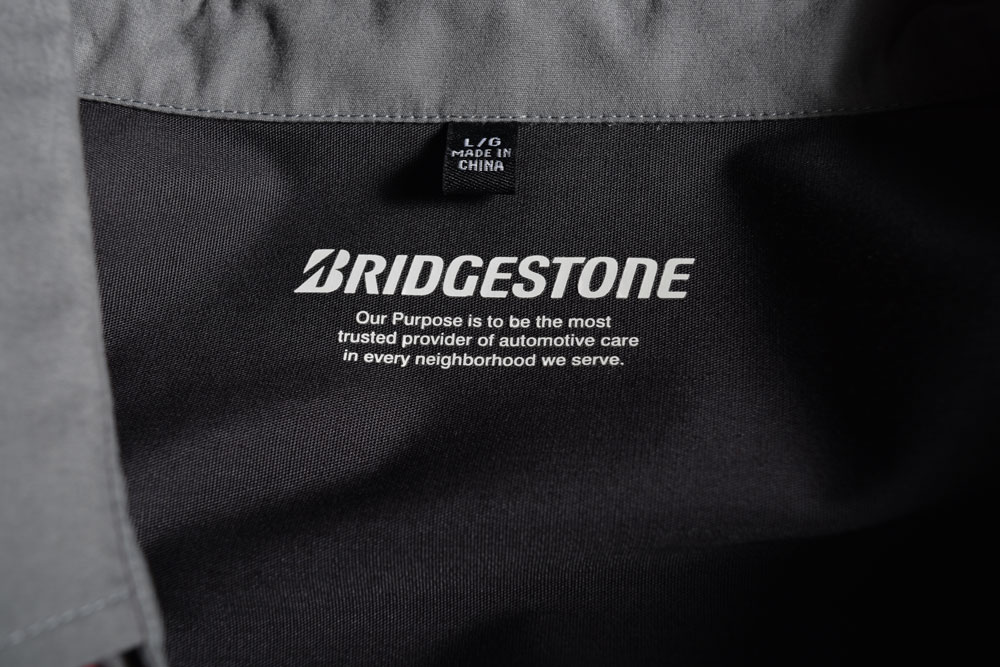
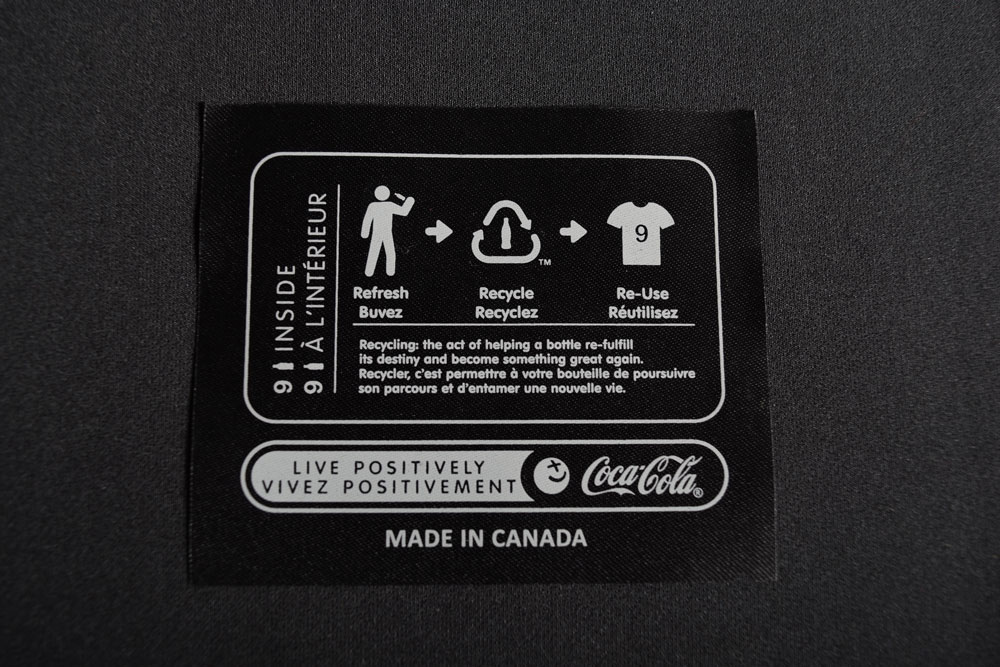

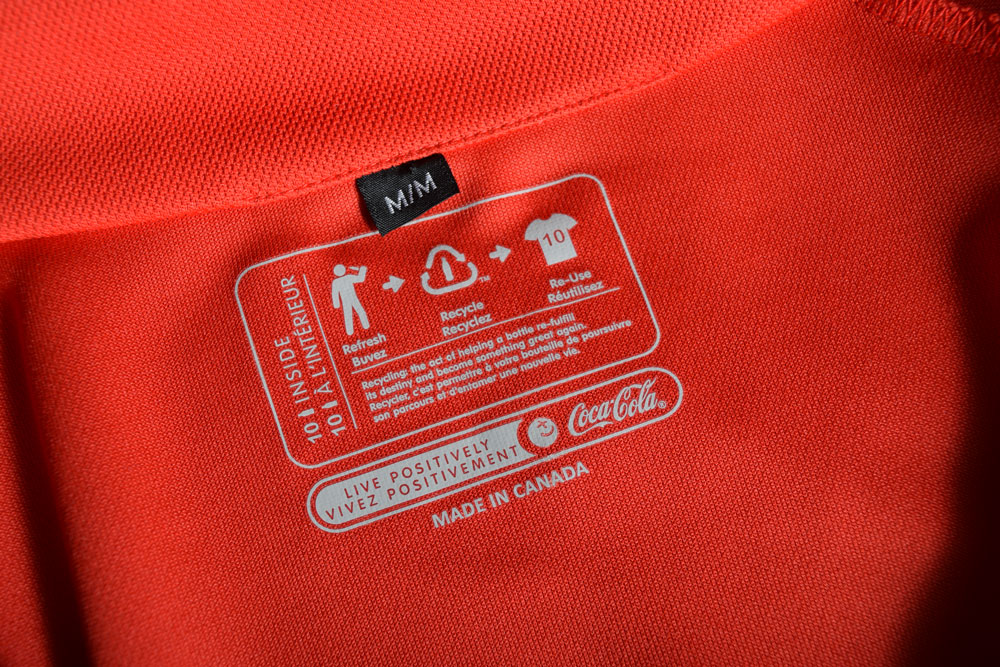
Heat Transfers
LabelsTrimThere are two categories of heat-transfers; "weeded" heat-transfers and non-"weeded" heat transfers. "Weeded" heat-transfers are cut out of vinyl film, and the excess material is pulled or "weeded" away, leaving behind the desired design. The artwork for a weeded heat-transfer cannot have too many fine details, like small text for instance. Parts of the artwork can pull away with the waste if the details are too picky. Weeded heat-transfers are available in about a dozen colors, but the most common is 3M reflective silver.
Non-"weeded" heat-transfers are actually silk-screened onto paper, and in-turn pressed onto fabric with heat and pressure. There are fewer limitations with non-"weeded" heat-transfers; they can achieve full, rich color, gradient and shadow, and match to any PMS color.
The over-rising disadvantage of non-"weeded" heat-transfers is that they leave a noticeable contour of adhesive surrounding every shape. In many cases, the artwork is placed on a solid-color background to alleviate the outline issue.






